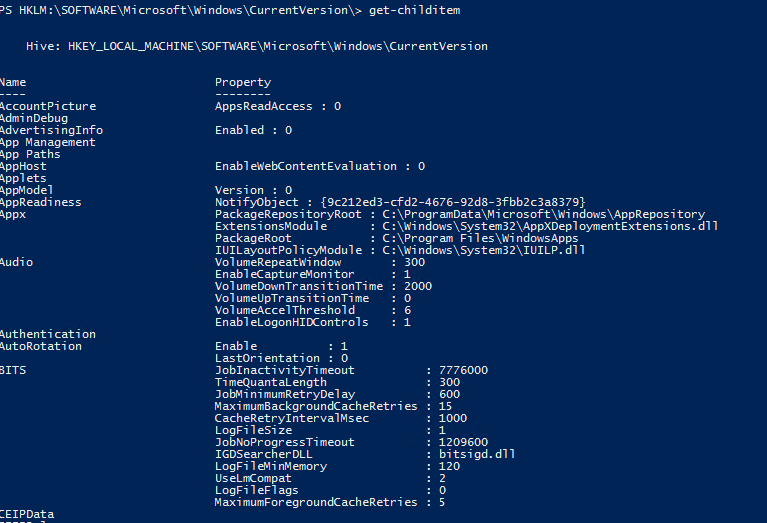
- #Search registry keys manuals#
- #Search registry keys windows 10#
- #Search registry keys software#
- #Search registry keys license#
- #Search registry keys windows#
This can be especially handy in the computer repair shop because asking clients for product keys can be frustrating and time-consuming which slows down the repair process. It doesn’t require an installation and it can scan a remote hard drive.
#Search registry keys license#
License Crawler is totally free, small and very portable.
#Search registry keys windows#
All Windows versions from 95 to 7 are supported. ' ' You can set a key path in the variable sStartKeyPath if ' you want to limit the search to a specific registry branch. License Crawler finds keys pretty quickly, my computer has a lot of programs installed and it finished searching in 1-2 minutes. ' Script that will do a substring search in all key names ' for the string in the variable sKey and delete the key ' if the string is found. Any keys that are registered in there should be found, including the Windows key and keys for programs like Office, Nero, and VMWare.
#Search registry keys manuals#
Instead of manually searching through CD cases, emails, and instruction manuals for those keys, License Crawler searches the registry looking for anything that could be a product key.
#Search registry keys software#
Important! Notice the space between Windows\\ NT Configure from NetScaler CLI Run the following command from NetScaler CLI:Īdd aaa preauthenticationpolicy EPA_expression_domain_membership1 q/CLIENT.REG('HKEY_LOCAL_MACHINE\\\\SOFTWARE\\\\Microsoft\\\\Windows\\ NT\\\\CurrentVersion\\\\Winlogon_DefaultDomainName').VALUE = CITRIX/ Test Configure from NetScaler GUIĪlternatively, you can use both expressions to create a single preauthentication policy and look for both registry keys.ĬLIENT.REG('HKEY_LOCAL_MACHINE\\\\SYSTEM\\\\CurrentControlSet\\\\Services\\\\Tcpip\\\\Parameters_Domain').VALUE = || CLIENT.REG('HKEY_LOCAL_MACHINE\\\\SOFTWARE\\\\Microsoft\\\\Windows\\ NT\\\\CurrentVersion\\\\Winlogon_DefaultDomainName').VALUE = CITRIXĪdd aaa preauthenticationpolicy EPA_expression_domain_membership_REPRO q/CLIENT.REG('HKEY_LOCAL_MACHINE\\\\SYSTEM\\\\CurrentControlSet\\\\Services\\\\Tcpip\\\\Parameters_Domain').VALUE = || CLIENT.REG('HKEY_LOCAL_MACHINE\\\\SOFTWARE\\\\Microsoft\\\\Windows\\ NT\\\\CurrentVersion\\\\Winlogon_DefaultDomainName').VALUE = CITRIX/ Test Configure from NetScaler GUIWhen reinstalling an operating system you have to search around for all the product keys for your software a neat way to get it all in once place is with the License Crawler tool. This registry key is located at - My Computer\HKEY_LOCAL_MACHINE\SOFTWARE\Microsoft\Windows NT\CurrentVersion\WinlogonĬLIENT.REG('HKEY_LOCAL_MACHINE\\\\SOFTWARE\\\\Microsoft\\\\Windows\\ NT\\\\CurrentVersion\\\\Winlogon_DefaultDomainName').VALUE = CITRIX



In the registry, copy and paste the below path in the address bar and press Enter. To locate the product key in the registry, these the steps you should follow.
#Search registry keys windows 10#
The EPA expression to use on the NetScaler Gateway is:ĬLIENT.REG('HKEY_LOCAL_MACHINE\\\\SYSTEM\\\\CurrentControlSet\\\\Services\\\\Tcpip\\\\Parameters_Domain').VALUE= Configure from NetScaler CLI Steps to Find Windows 10 Product Key in Registry. You will be presented with a popup window. This registry key is located at - My Computer\HKEY_LOCAL_MACHINE\SYSTEM\CurrentControlSet\Services\Tcpip\Parameters Hit the Add Registry Scan button in the Registry Scanning section of the page. To perform a registry-based scan expression to look for domain membership you can use either of the following registry keys:Ĭaution! Refer to the Disclaimer at the end of this article before using Registry Editor.


 0 kommentar(er)
0 kommentar(er)
